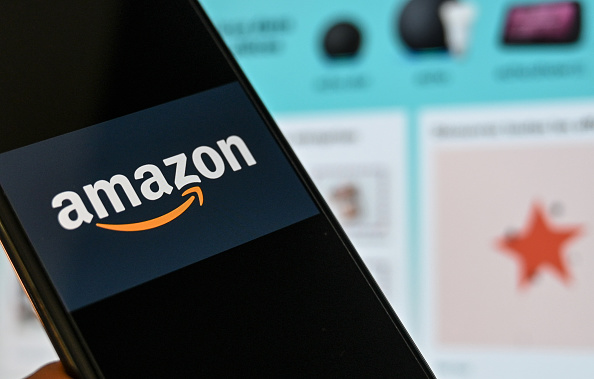Demanding, informed, yet seeking constant validation, today’s customer is complex – especially when it comes to discretionary purchases. Flitting between store and online, for these boomerang customers 60 per cent to 70 per cent of the decision making process will have occurred before any direct retailer interaction. And when product information, from reviews to social comments, is so incredibly accessible, few individuals these days will make any purchase without some form of community endorsement.
But what happens today when these clued up customers arrive in-store? Are they greeted by a knowledgeable Store Associate able to build on the existing online engagement? Is the desired product even available to view in that location? Or is the customer left floundering? With the link between in-store experience and online sales becoming increasingly apparent, the challenge for retailers is to gain an early and positive foothold in this increasingly complex and non-linear customer journey.
Craig Summers, UK managing director of Manhattan Associates, outlines the importance of creating a seamless, engaging customer experience from web store to shop and back again.
Catching the boomerang
The way in which retailers now nurture online customers has transformed the buying experience. From reviews to social links, in depth information and product comparisons, online customers have access to information, expertise and validation at every step of the journey. Yet for many purchases, especially discretionary purchases, customers still want to buy in-store – or at least have a chance to physically experience the item and gain additional information from, an empowered Sales Associate with information at their fingertips. Having already spent a significant amount of time online researching both products and potentially suppliers, this customer is informed and has high expectations. But how often does the in-store experience match up?
From the desired product not being available in the local store to a lack of visibility from a Store Associate, the speed with which a positive online experience can be destroyed when a customer arrives in-store is a concern. Consumers know what good looks like – and they have ever less tolerance for anything else. A customer arriving in-store ready to buy will not be satisfied by an ill-informed Sales Associate, however pleasant and engaging. The Store Associate must be ready, tablet in hand, to advise, recommend and deliver a solution to any challenges. And a bad experience in-store will, without any doubt, affect that customer’s likelihood of shopping online. Yes customers are demanding; but the quality and depth of online retail has dramatically raised expectations – expectations which can be very rapidly dashed in-store.
The problem is that many retailers are still servicing a perceived linear customer journey. But with customers flitting from online to store and back again, and making upwards of 60 per cent of the buying decision before any kind of direct engagement with a retailer, today’s customer journey is most definitely not linear. To capture and engage the boomerang customer base, the onus is on retailers to manage this customer cycle in a way that nurtures, engages and validates both online and in-store.
Expert and engaging
The key is to engage with customers early in their online research and actively nurture the buying journey. For example, a customer who has narrowed the product choice down to a couple of preferred items will be incredibly frustrated to discover one or more of those products is out of stock on arrival in-store. Using real-time stock information to show customers that the product being researched is available in the local store – or, if not, offering to transfer it from a nearby location by tomorrow – is an obvious step.
But that is just the start. When customers have so much information available online, how can a Store Associate match up? One option is create dedicated product experts and then flag up online the name of the Store Associate who is an expert in that specific area to provide the customer with an immediate point of contact. This approach can be extended to include an opportune booking or an in advance time slot with that Associate to create a very positive engagement.
Dedicated expert or not, every Store Associate needs to be armed with at least as much information as the customer – the days of leaving the customer alone while the beleaguered Associate goes back to the point of sale to painstakingly search for additional information are long gone. Instead, mobile devices that provide fast access to deep information, including product reviews and comparisons, best sellers and new offers, as well as up to date inventory and delivery information are a minimum requirement if Associates are to embark upon meaningful customer engagement. Adding information about that customer’s specific buying history, as well as recent browsing activity, provides Associates with the chance to embark upon a truly personal interaction.
Retail culture
However, the new style interaction demands more than innovative technology; a customer arriving in-store is not only actively looking for advice, information and validation but also wanting to enjoy the buying experience. How can retailers ensure staff are able to provide this engaging customer interaction? In addition to ideas such as creating dedicated product specialists in each store, it is worth considering Sales Associate skills and culture in order to effectively build on the existing on-line engagement. From questions designed to tease out a customer’s specific desires to sharing social experiences, such as favourite vloggers, the new in-store customer engagement is a world away from the traditional sales approach.
A Store Associate able to combine a relaxed, social style engagement with deep information about products, offers, inventory and delivery options, will be perfectly placed to nurture and entice the customer into making the buying decision – even up-sell where appropriate. All, critically, in an enjoyable way. And this is the key: customers are now coming into a store for a very specific reason. They want to seamlessly extend the online experience in-store; they want purchase validation from an expert; and they want it to be fun.
By reconsidering the now cyclical approach to buying, retailers can combine technology and culture to create an enjoyable in-store sales model – and effectively embrace the modern customer journey.
Craig Summers is UK managing director of Manhattan Associates





